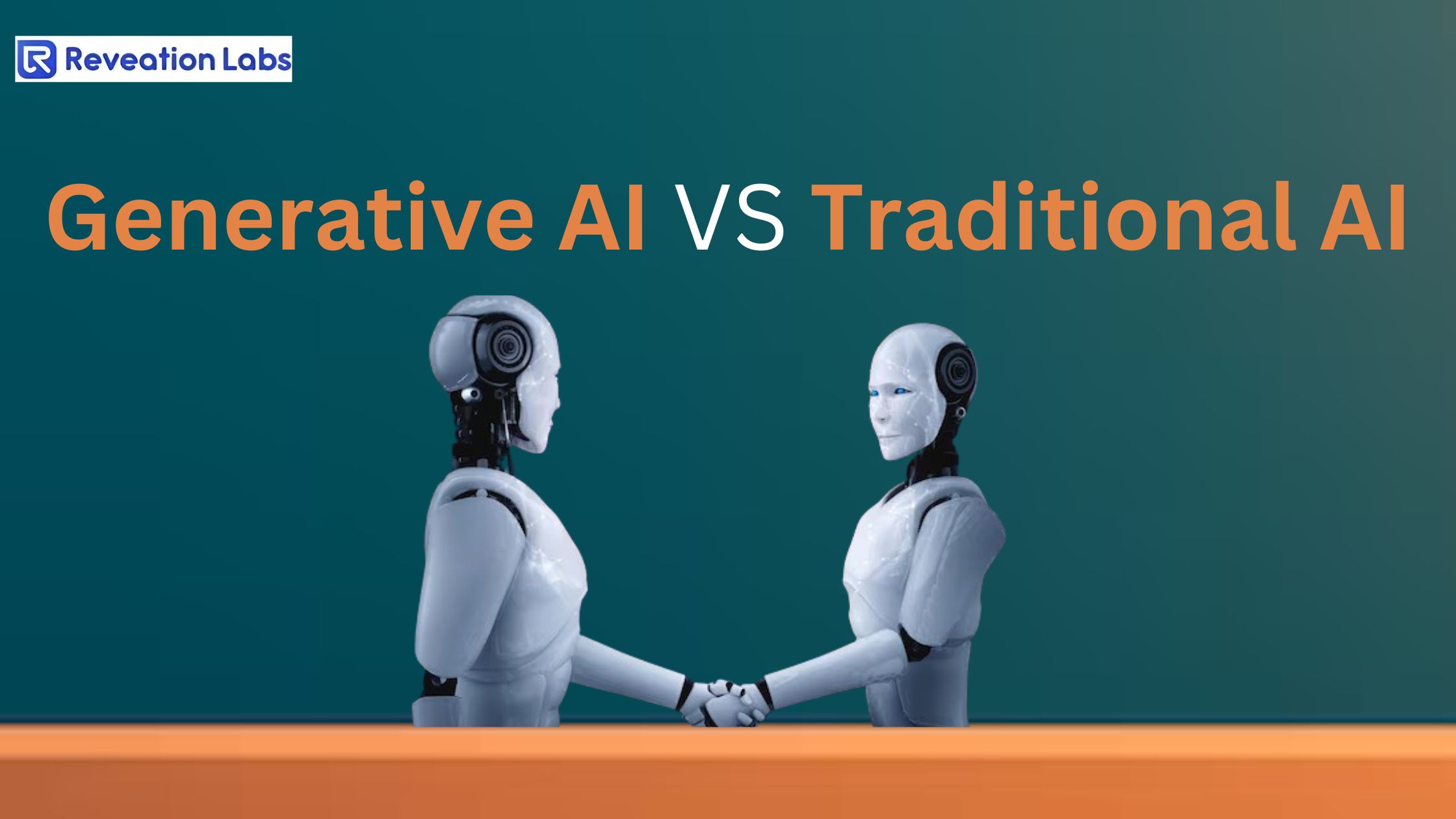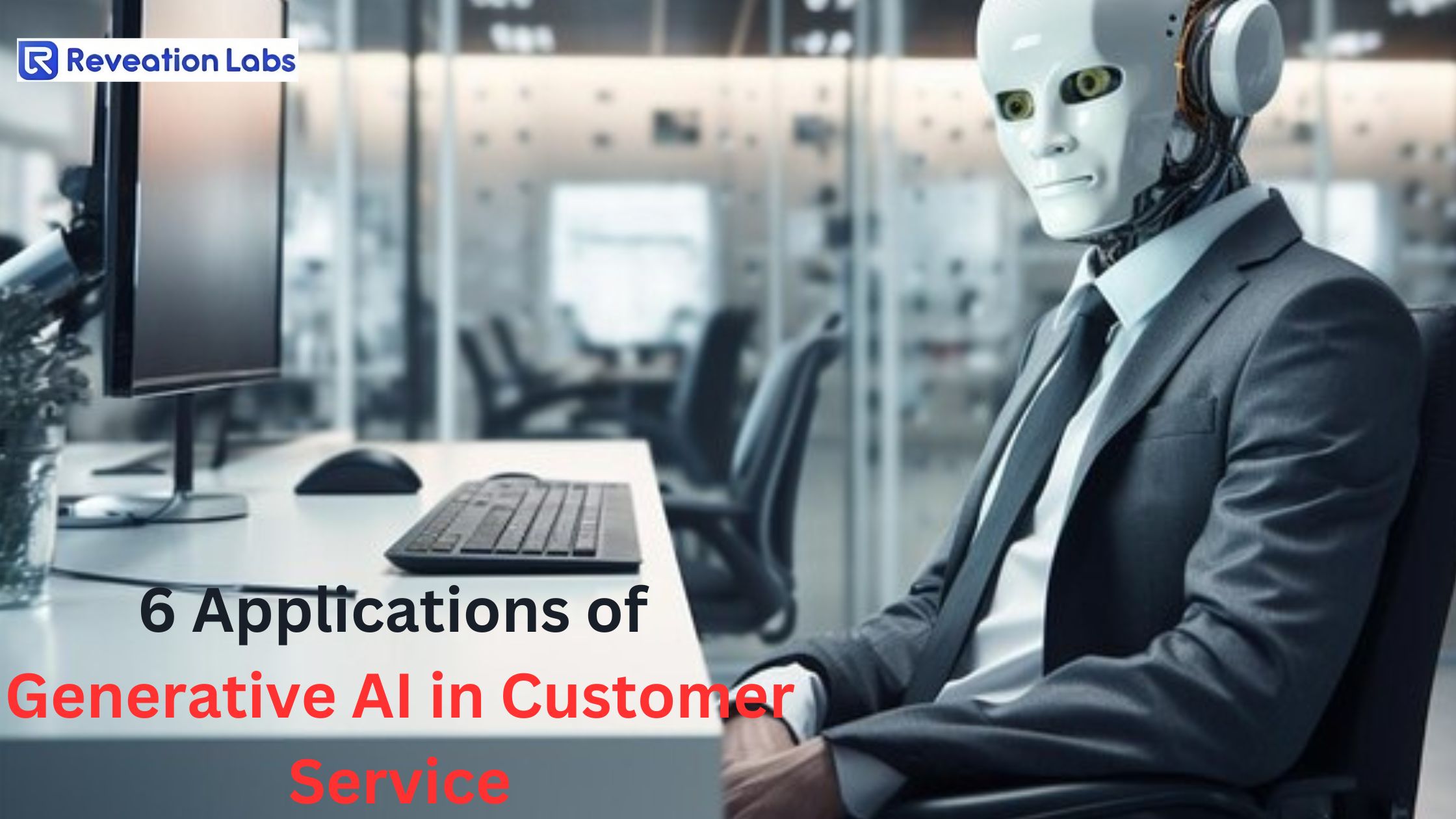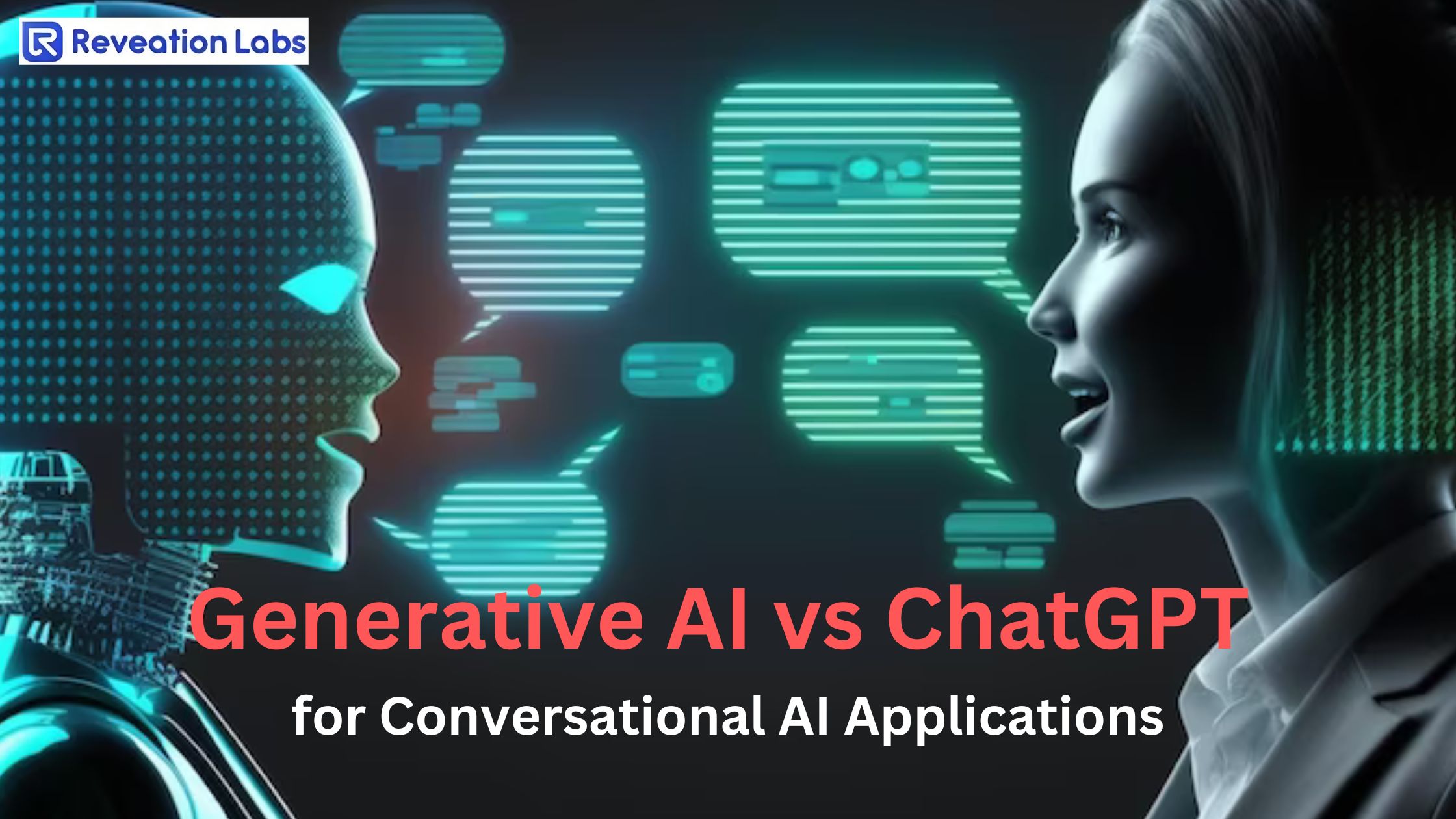Divya Nautiyal
Fri Dec 15 2023


Artificial Intelligence, or AI, is a fascinating field of computer science that focuses on creating intelligent machines capable of performing tasks that typically require human intelligence. These tasks include learning, reasoning, problem-solving, perception, and language understanding.
The journey of AI has seen significant evolution. Traditional AI, also known as rule-based or symbolic AI, relies on explicit programming and predefined rules to perform tasks. However, the limitations of this approach became evident as it struggled with complex, real-world scenarios.
So, here comes Generative AI, a new frontier in AI development. Unlike its predecessors, Generative AI is designed to learn from data and generate new content. This shift marks a departure from rule-based systems, as Generative AI can create original outputs based on patterns and examples it has encountered during training.
This blog aims to get into the core concepts of Generative AI and Traditional AI. By understanding the differences, we can appreciate how Generative AI's ability to generate content sets it apart from the more rule-centric approach of Traditional AI.
Traditional AI
A. Definition and Characteristics of Traditional AI
1. Rule-based Systems
Traditional AI, also known as rule-based AI, relies on predefined rules and explicit programming to make decisions. These rules are like step-by-step instructions that guide the AI system in solving problems or performing tasks. It's like giving the AI a detailed recipe to follow.
2. Symbolic AI
Symbolic AI is another aspect of Traditional AI where the system processes symbols and uses logical reasoning. It involves representing knowledge in a structured way, often using symbols and relationships. Think of it as teaching the AI to understand concepts through symbols, much like how we use language to convey meaning.
Look at: AI Chatbots Explained: Types and Examples
B. Limitations of Traditional AI
1. Lack of Adaptability
Traditional AI systems struggle with adapting to new or unexpected situations. Since they rely heavily on predefined rules, they might not perform well when faced with scenarios outside their programmed instructions. It's like having a rigid set of guidelines but not knowing what to do if things deviate.
2. Dependency on Explicit Programming
The AI's actions in traditional systems are determined by explicit programming. This means human programmers need to foresee and code every possible scenario. If a situation arises that wasn't anticipated during programming, the AI might not respond appropriately. It's akin to having a computer that only does what it was explicitly told to do, without any ability to think on its own.
3. Handling Complexity Issues
Dealing with complex problems is challenging for Traditional AI. As real-world situations become intricate, rule-based systems can struggle to find effective solutions. It's like trying to solve a puzzle with fixed pieces when the puzzle itself keeps changing. This limitation hinders the application of Traditional AI in dynamic and unpredictable environments.
Generative AI
A. Definition and Key Concepts of Generative AI
Generative AI is a branch of artificial intelligence that focuses on creating machines capable of producing new and original content. Unlike traditional AI, which follows strict rules, Generative AI learns from data and uses that knowledge to generate fresh and creative outputs. It's like teaching a computer to be innovative and come up with new ideas.
B. Machine Learning and Neural Networks
Generative AI relies heavily on machine learning, a way of training computers to learn patterns from data. Neural networks, inspired by the human brain, are a key part of this process. They enable the AI to understand and interpret information, making it capable of learning and improving over time. It's like giving the AI a brain to think and learn on its own.
C. Generative Models
1. Generative Adversarial Networks (GANs)
Generative Adversarial Networks GANs are a type of generative model that consists of two parts – a generator and a discriminator. The generator creates new content, and the discriminator evaluates how realistic it is. They work together like a creative duo – one generating ideas, and the other critiquing and refining them.
2. Variational Autoencoders (VAEs)
Variational Autoencoders VAEs are another kind of generative model. They focus on learning the underlying structure of the data and then use that knowledge to generate new content. Think of them as artists who understand the essence of a style and can create something new based on that understanding.
D. Strengths of Generative AI
1. Creativity and Content Generation
One of the main strengths of Generative AI is its ability to be creative. It can produce art, music, or even text that feels like it was created by a human. This creativity opens up new possibilities in various fields, from entertainment to design.
2. Adaptive Learning
Generative AI is adaptive; it learns and evolves based on the data it encounters. This adaptability allows it to handle a variety of situations and challenges. It's like having a versatile assistant that can learn and improve with every task it takes on.
Suggested: Guide on Generative AI Developers for Business Owners
Key Differences between Generative AI and Traditional AI
A. Learning Approach
Traditional AI: It relies on strict rules set by programmers. Imagine it as a robot following a precise script.
Generative AI: Learns from data examples, adapting and evolving. It's like a creative assistant learning from experience rather than just following predefined instructions.
B. Adaptability
Traditional AI: Sticks to its fixed programming. Think of it like a robot with a set plan that doesn't easily adapt to unexpected changes.
Generative AI: Adapts to new situations based on the knowledge it gains. It's like a versatile assistant adjusting its approach as circumstances evolve.
C. Creativity and Novelty
Traditional AI: Has limited creativity, working within predefined boundaries. Picture it as a tool that can only produce outcomes within its programmed limits.
Generative AI: Displays creativity, generating novel content. Imagine an imaginative assistant coming up with new and original ideas beyond its explicit training.
D. Realism in Data Generation
Traditional AI: Works with data based on programmed rules, creating simulations. It's like constructing a model that may not fully capture real-world complexity.
Generative AI: Produces realistic data by learning from examples. Think of it as an artist creating lifelike representations based on observed patterns.
E. Training Data Dependency
Traditional AI: Highly dependent on precise training data to perform well. It's like needing an exact script to operate effectively.
Generative AI: More adaptable to diverse training data, capable of learning from a variety of examples. It's like a learner who benefits from experiencing different scenarios.
F. Problem-solving Approach
Traditional AI: Follows predefined algorithms for problem-solving. It's like solving a puzzle with a predetermined set of steps.
Generative AI: Utilizes learned patterns for problem-solving. Imagine a problem-solver that draws on past experiences to find creative solutions.
Also Read: Benefits of Integrating ChatGPT and NLP: From Context to Code Generation
G. Application Domains
Traditional AI: Commonly used in rule-based tasks like data analysis and decision-making.
Generative AI: Excels in creative tasks like image generation, music composition, and language generation.
H. Human Interaction
Traditional AI: May lack a natural interface, interacting based on programmed responses.
Generative AI: Can offer more natural and human-like interactions, understanding and generating content in a way that feels conversational.
I. Uncertainty Handling
Traditional AI: Struggles with uncertainty and ambiguity, as it prefers clear rules.
Generative AI: Better at handling uncertainty, making it more adaptable to situations with incomplete or unclear information.
J. Resource Intensity
Traditional AI: Generally requires less computational resources for training.
Generative AI: Often more resource-intensive, especially in complex tasks, due to the demands of learning from diverse data and generating creative outputs.
K. Learning Speed
Traditional AI: Learns at a consistent pace set by its programming.
Generative AI: Can learn rapidly and improve quickly, especially in creative tasks, by continuously adapting and evolving based on new data.
Suggested: Top 12 Generative AI Use Cases
Future Trends
Evolving Trends in Generative AI
Looking ahead, Generative AI is set to unfold exciting trends. The continuous refinement of generative models, such as GANs and VAEs, will likely result in even more realistic and creative outputs. Expect developments in diverse applications, including art, entertainment, and problem-solving. As data availability grows, Generative AI's capacity to learn and generate novel content is poised for remarkable enhancements.
Potential Advancements in Traditional AI
While Generative AI takes strides, Traditional AI is not left stagnant. Potential advancements may focus on refining rule-based systems, making them more adaptable and capable of handling complex real-world scenarios. Innovations could arise in optimizing explicit programming, reducing limitations, and broadening the scope of tasks that Traditional AI can efficiently tackle.
C. Synergies Between the Two Approaches
The future could witness a harmonious collaboration between Generative AI and Traditional AI. By combining the creativity and adaptability of Generative AI with the precision and reliability of Traditional AI, we may unlock new possibilities. Synergies between these approaches could lead to AI systems that excel in both creative endeavors and rule-based tasks, creating a more versatile and powerful landscape for artificial intelligence.
Conclusion
In summarizing the journey through Traditional AI and Generative AI, it's clear that the disparities lie at the core of their approaches. Traditional AI, with its explicit rules and fixed programming, contrasts sharply with the dynamic, data-driven learning of Generative AI. The limitations of Traditional AI in adaptability, creativity, and handling uncertainty pave the way for the innovative strengths of Generative AI.
Looking ahead, the implications for the future of AI are profound. Generative AI opens doors to unprecedented creativity and adaptability, making strides in diverse fields like art, language generation, and problem-solving. The ability to handle uncertainty and interact more naturally with humans propels AI into realms previously deemed challenging. As we embrace these advancements, the future promises not just automated tasks but collaborative partnerships between humans and intelligent machines.
Why Reveation Labs
We are a team that is technically proficient and simultaneously caring for your business. Our ideology is to provide the latest technologies that suit your business well.
Let’s discuss your requirements!
Give your business the next-gen technology it deserves. Be a part of our family of successful enterprises that work on high-end software solutions.
Experts
In all the latest technologies and developments.
Creative
To innovate the best solutions and pick the right technology for you.
Ethical
To always put you first & respect your business values and procedures.
Dedicated
To meet the deadlines and help you until the very end and beyond.
Approachable
For all your business needs and queries at any point of time.
Transparent
In our ways of working.




